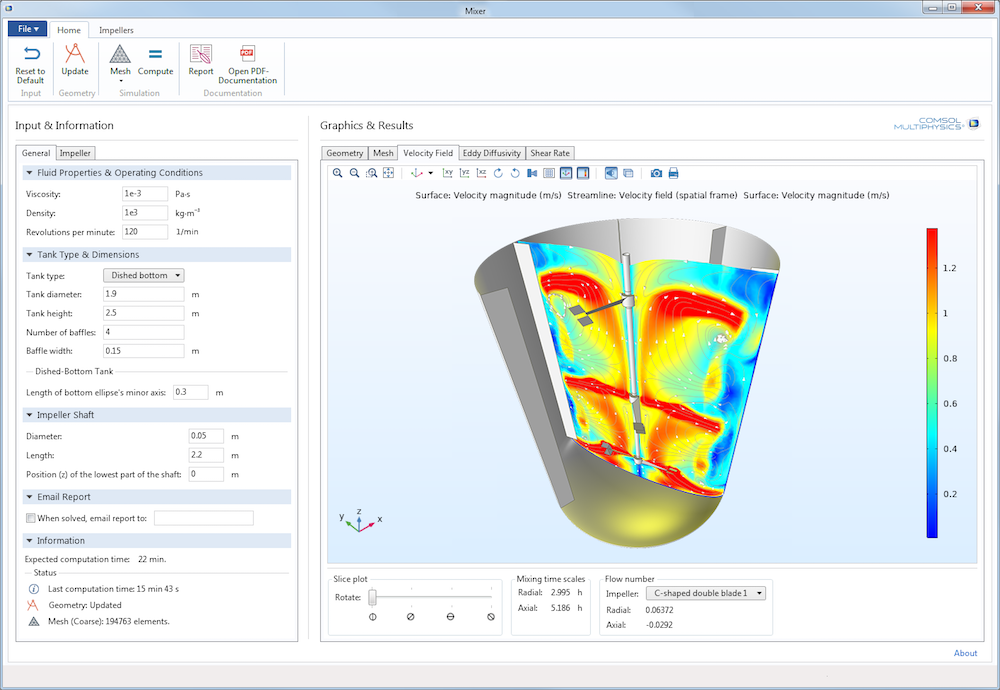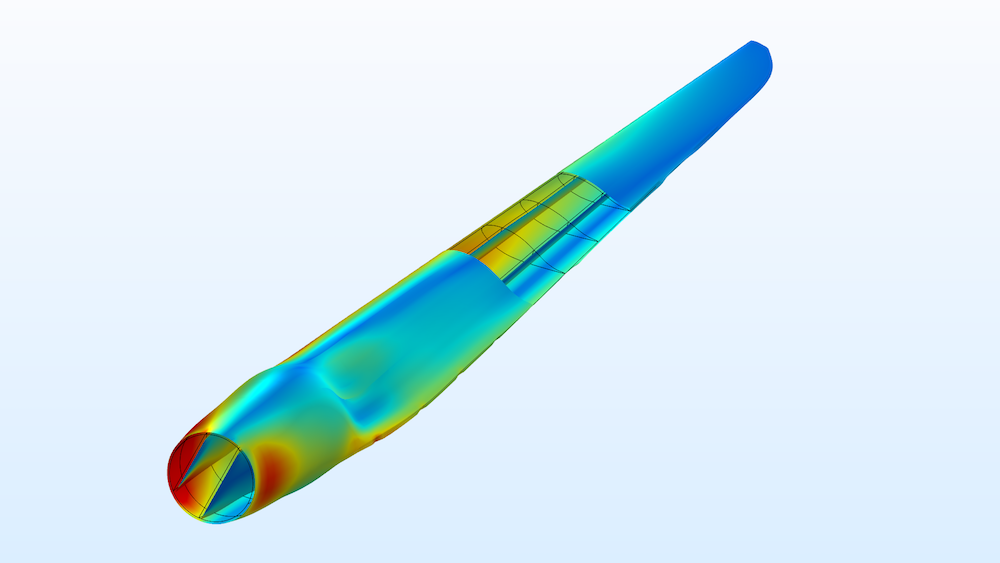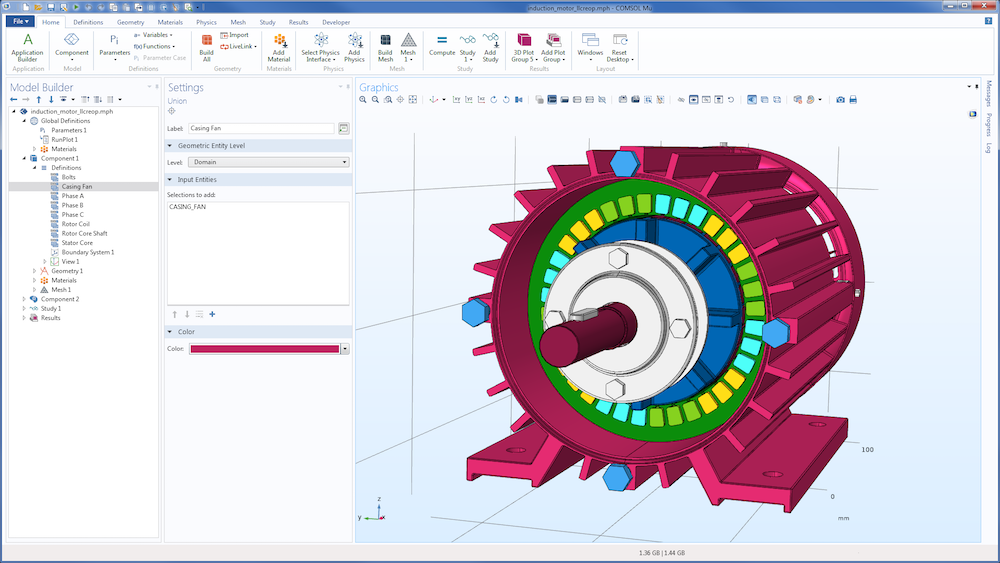
It’s here! Version 5.4 introduces a new product, COMSOL Compiler™, which enables creators of simulation applications to deploy them to users without restrictions. In addition, the latest version of the COMSOL Multiphysics® software brings enhanced usability and new physics-specific modeling features, as well as the new Composite Materials Module for modeling thin, layered structures.
Deploy Applications to Anyone, Anywhere with COMSOL Compiler™
COMSOL Compiler is a product for compiling your COMSOL Multiphysics applications into standalone executable files that can be distributed at your discretion. To run a standalone application, users do not need a COMSOL Multiphysics or COMSOL Server license, and COMSOL Runtime™ is included in the executable file. Standalone applications and digital twins can be compiled for the Windows® and Linux® operating systems as well as macOS.

An example of an application that has been compiled with COMSOL Compiler.
When you have a COMSOL Compiler license, a single Executable button is added to the Application Builder user interface. This Executable feature includes a few simple settings, such as:
- The output directory
- Which platforms to compile the application for
- A customized splash screen
For a product that is so simple to use, COMSOL Compiler offers immense benefits, positioning you as not only the software user but also the software creator.
New Product: The Composite Materials Module
The new Composite Materials Module is an add-on to the Structural Mechanics Module. This product brings you modeling tools for analyzing layered composite structures, which is useful for anyone who wants to simulate fiber-reinforced plastic, laminated plates, and sandwich panels, among other use cases.

A wind turbine blade made out of a laminated composite material. The model was created with the new Composite Materials Module.
The technology behind the module is based on the layerwise theory and equivalent single-layer theory for modeling composite shells. You can use this functionality to simulate first-ply failure, linear buckling, delamination, and fatigue analysis.
As with any new add-on product, the Composite Materials Module is multiphysics ready. You can include the effects of thermal expansion, Joule heating, fluid-structure interaction, and acoustic-structure interaction in your composite layer analyses.
Enhanced Usability in the COMSOL Multiphysics® Software
COMSOL Multiphysics version 5.4 includes several new features to optimize your modeling workflow, especially for users who like to keep a clean and organized model tree. For instance, node groups can be created for many nodes in the model tree, including selections, probes, materials, physics boundary conditions, and derived values. Besides grouping these model tree nodes, you can also keep your parameters more organized with multiple parameters nodes. Keeping your model organized is helpful — especially when working with larger models.
Another new feature that will help you navigate models that have large, complex geometries is the ability to add color themes for geometry selections. Color themes make it easier to distinguish between the different parts of a model in the Graphics window.

An example of a large 3D model where colored selections make it easier to navigate the different model parts.
New Physics-Specific Features in the Add-On Modules
There are many more new features and updates included in the add-on modules in the COMSOL product suite — too many to mention in this blog post, in fact! Stay tuned as we discuss more of the noteworthy features in version 5.4 in the upcoming weeks and months.
For now, head to the Release Highlights to get a full rundown of the new version.
Microsoft and Windows are either registered trademarks or trademarks of Microsoft Corporation in the United States and/or other countries. Linux is a registered trademark of Linus Torvalds in the U.S. and other countries. masOS is a trademark of Apple Inc., in the U.S. and other countries.



Comments (0)